Once walking into Sangti Valley the houses felt like characters in a slow, breathing story. Each two‑storey home sat rooted in the slope, its base hewn from rough river stone that smelled faintly of damp earth and moss, the kind of stone that takes years to settle and knows the sound of winter. Above that, the upper floor was built from finer cut stone — a warm ochre that deepened with sun and age until walls looked as if painted by the seasons themselves. The walls were nearly a foot and a half thick, solid and reassuring, sealing in warmth during the cutting Himalayan nights.

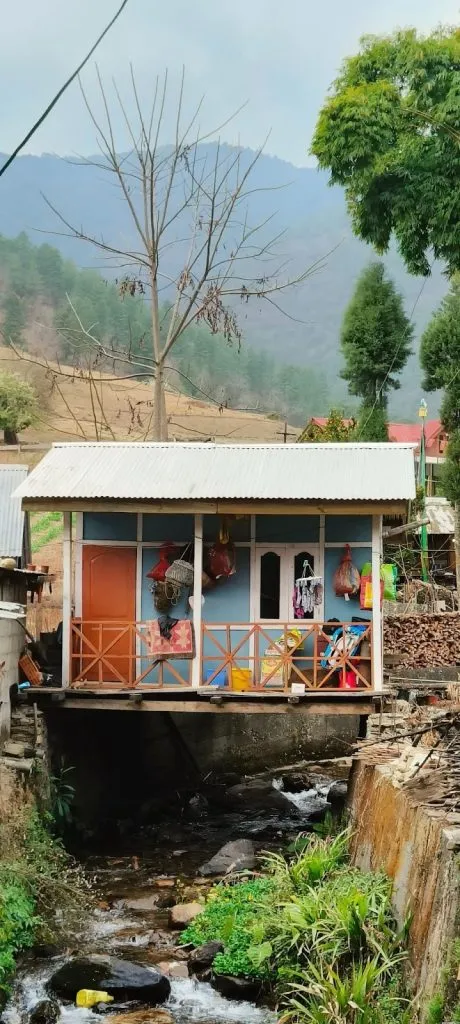
I remember the way the narrow windows let in slivers of light only: intentionally small, few in number, to keep the cold out. Inside, the rooms were dim but intimate. Wooden floors bore the patina of generations; sheep‑wool rugs lay scattered, softening every step. The kitchen, always the heart of the house, was noisy with domestic life — the clink of bright aluminium utensils, the steady crackle of a central fireplace, a stack of firewood heaped like an offering beside the door. Above, rafters were strung with bundles of dry corn, tied and swaying slightly in the breeze — a suspended harvest, stubbornly resisting the forgetfulness of winter.

These homes were not only stone and wood; they were woven from bamboo mats and delicate carpentry. Doors and window frames were wooden, sometimes painted in vivid hues, their paint flaked and aged into patterns I enjoyed tracing. A few houses boasted intricate paintings — deities, protective symbols, or simply color and life rendered with a hand that took pleasure in detail. Bamboo fences demarcated yards where potted bright flowers burst against the stones, their colors shouting joy into the valley. Orange and persimmon trees crouched near the walls, their fruit like suns among the leaves. Pumpkin creepers sprawled in wiry tangles, their broad leaves sheltering small orange moons. Chives and chilli plants grew in every backyard, practical and ornamental at once, their fragrances rising when I crouched to touch them.
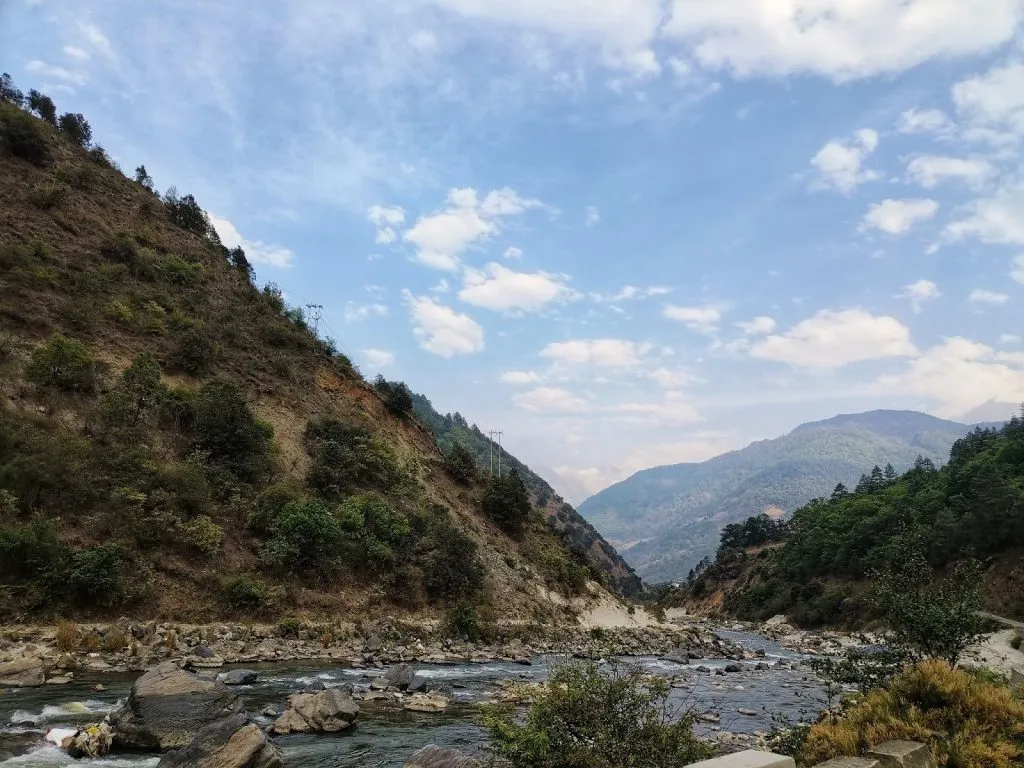
Water is music in Sangti. Small streams, channeled from hillsides, whispered past the houses, giving a steady, clean rhythm to daily life. I watched children dip hands in icy channels to drink; I watched women draw water for cooking and rituals. Along the terraces and fields beyond, wild berry blossoms hovered like tiny lanterns, and wild cosmos waved their delicate faces in the breeze. There the farmers tended corn and millet, chillis drying on stone slabs, the land a patchwork stitched by generations.
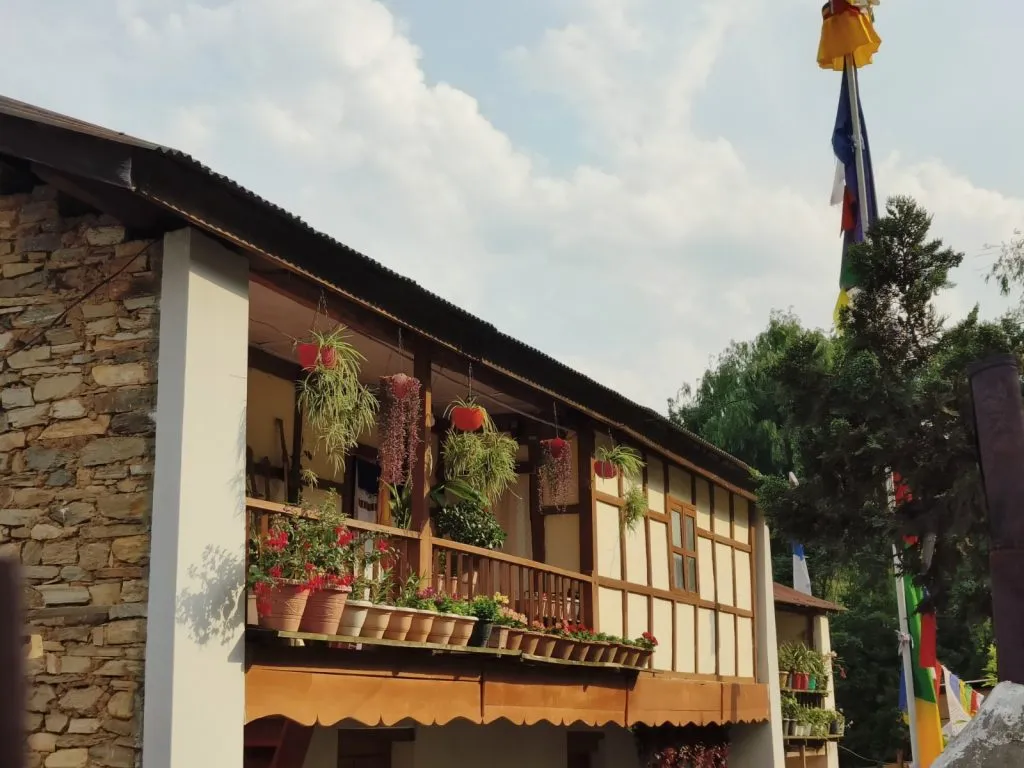
This living architecture — a synthesis of stone, wood, bamboo and human care — felt inseparable from the people who made it. The inhabitants of the valley are a Buddhist community who settled here centuries ago from Bhutan, and their faith and customs are threaded through the landscape: small monasteries perched like guardians, and roadside memorial stones painted in orange and gold bands that catch the sun at dusk. Prayer flags, faded but proud, stitched movement into the stillness. Their houses hold memory; they are not just shelter but repositories of ritual, food, and story.
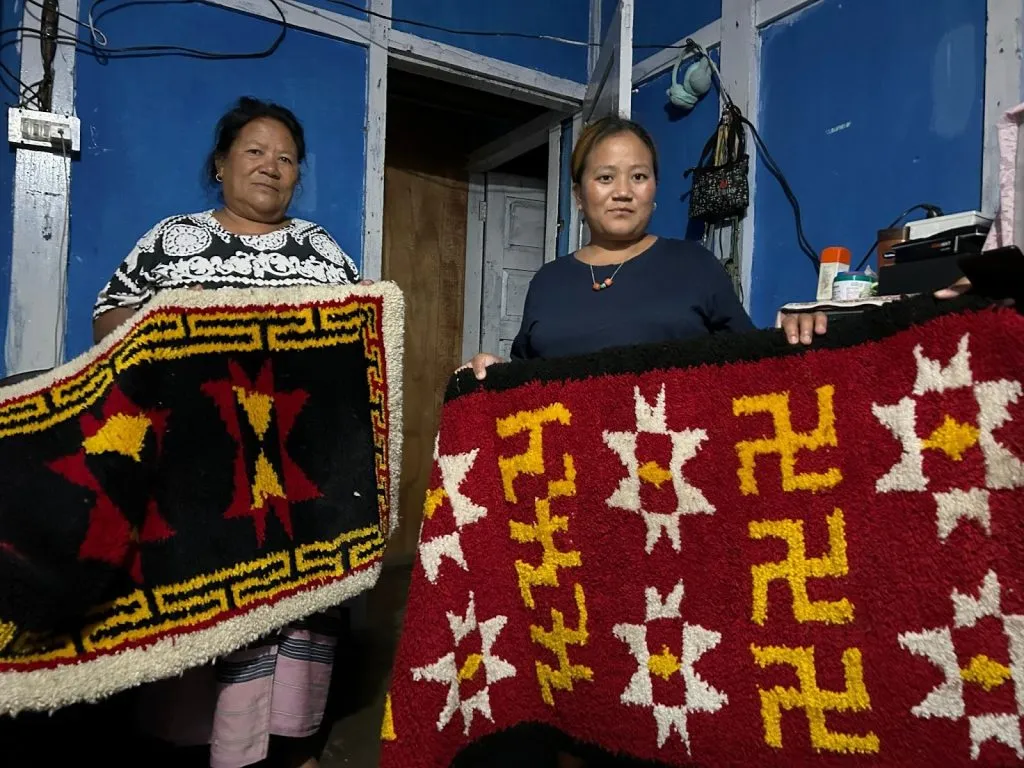
I felt, as I walked between lanes, like a traveler through time. Each doorway I passed offered a domestic tableau: a woman husking millet, bright turquoise chives in a clay pot at her feet; a stack of woven bamboo mats drying on a ledge; pumpkins curling near a stoop where infants crawled under watchful eyes. Smoke rose in soft ribbons from hearths at dusk, and dogs padded silently between sleeping animals kept in the stone ground floors.
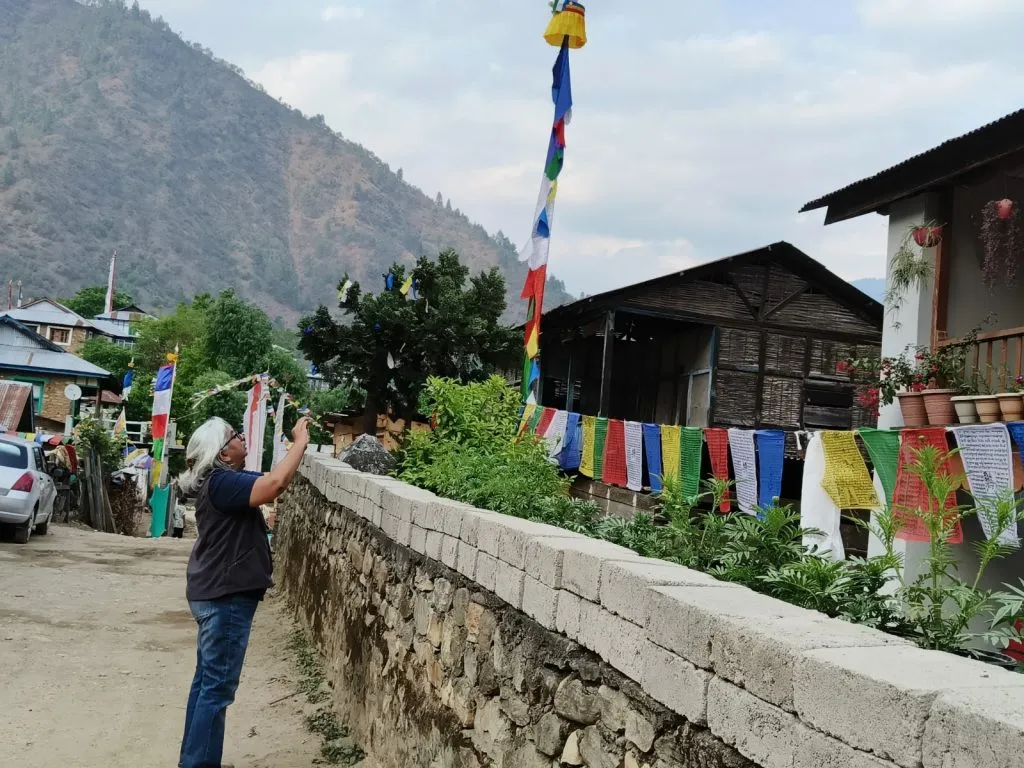
And yet, the valley is changing. New concrete structures are beginning to creep up like a different kind of architecture — straight, pale, and unyielding. They do not age into ochre; they do not harbor small dark windows or shelter potted flowers on their sills. Where once there was a rhythmic rhythm of smoke and song, I see blank walls and fresh paint promising modern comfort but offering none of the layered warmth of the old homes.
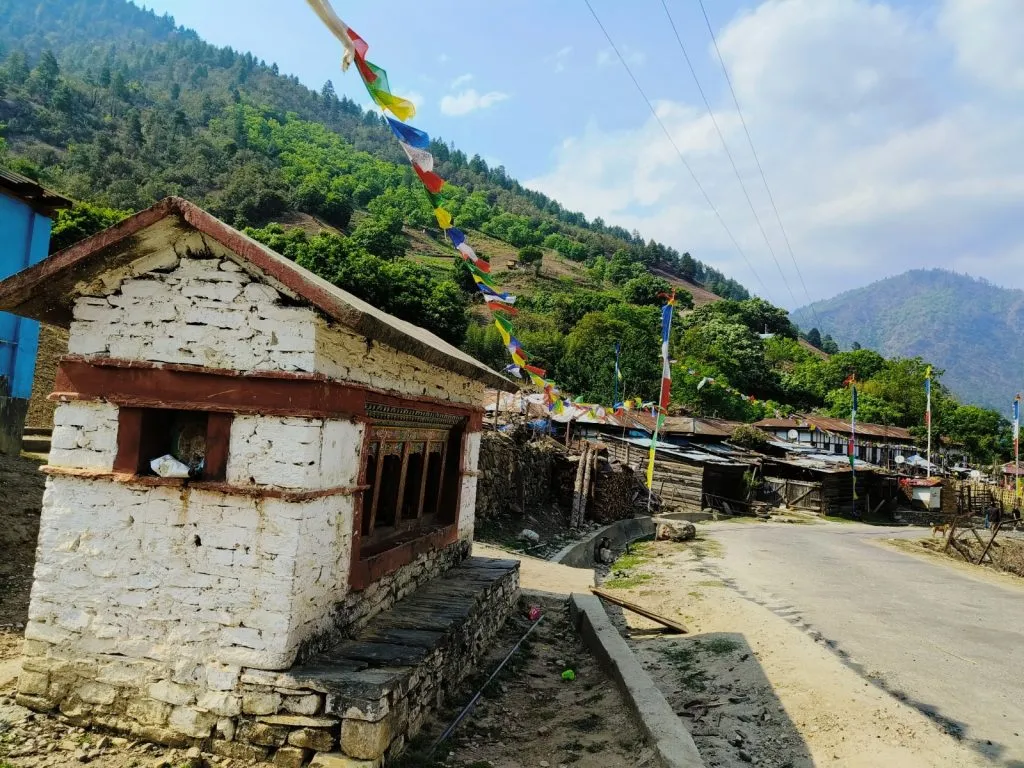
I worry that if this continues, something fragile and essential will be lost: not only the craft and materials, but the living patterns of life that these houses enable. The corn hung from rafters, the careful stonework of animal stalls, the shared courtyard conversations — they are all part of a whole. As I left the valley the last time, the sight of an old wooden door I had traced with my palm made me wish there were ways to keep these homes alive, to let them stand beside the new without being swallowed. Sangti’s beauty is not only in its mountains or wildflowers, but in the tender, durable homes that have sheltered people and their history — and I hope we find a way to keep that living heritage from slipping away.



